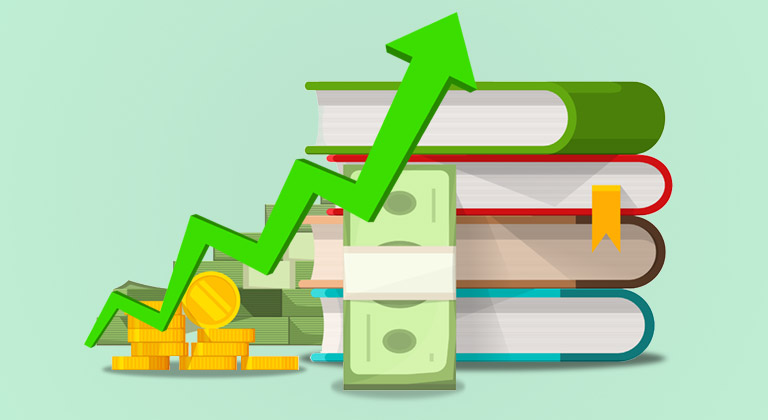Combining Entrepreneurialism and Self-Publishing – The “Billy Houston Method”
Recently, we interviewed Australian entrepreneur and author Greg Holman, and one of the nuggets he shared in his debut novel, Billy Houston Rags to Riches, was the secret to a successful business. And while you may be one of those authors that embraced storytelling as a way to leave that world behind and be your own boss, you would be making a mistake by ignoring it completely. There are many parallels between running a business and self-publishing your book, which means that a lot of Billy Houston’s advice can be used to make your own career more successful.
In his novel, serial entrepreneur Billy Houston imparts some of Greg’s real-life wisdom (as the author himself is a massively successful entrepreneur) and it resonated deeply with me as a self-published author.
Process, leverage, and distribution – the three guiding business principles that would guide my business endeavors.
You might wonder what the rules of business might have to do with your career as a writer – but when you embark on self-publishing your work, you become more than a writer – you become a publisher.
And being a publisher means handling the business side of writing.
But instead of thinking of that as an unfortunate side effect of self publishing, think of it as more of an opportunity – and Billy Houston’s advice can be invaluable in leveraging that opportunity. As a self-published author you are beholden to nobody, you can do what you want, and success and failure rests entirely in your own hands. I imagine most authors reading this are more excited by that statement than intimidated by it.
I truly believe it all comes down to those three principles Billy Houston touted – process, leverage, and distribution.
Process
Process is the process in which you write your book – and this is one I’ve seen a lot of authors challenged by. Remember what Oscar Wilde said: “We define ourselves as verbs, not nouns.”
That means if you are a writer, you have to write – and the process of that forms the foundation of your self-publishing career.
We’ve spoken before about the importance of writing every day, and tracking your daily word count – and in always looking ahead to the next book. I’ll stand by those pieces of advice as the most important any aspiring writer can cling to.
If you’re not writing, you’re not a writer. It’s as simple as that!
You should always be writing, or always have your next book growing inside your imagination like a little acorn seed. That’s what makes you a writer – the fact that you’re writing – right now!
If you’re done writing – you’re finished – you’re an author, I suppose; but nobody ever achieved their writing ambitions by sitting on the books they’ve already written.
Process is the way in which you approach that writing. A process, as Greg Holman explains, is like a step-by-step manual to ensure consistency in the work you do. As a writer, there are two ways in which you can employ process.
As Billy Houston puts it: “For any task done more than once, there must be a documented process – because why the f**k would you do the same thing ten times, in ten different ways?”
The first way you can employ process is in the physical act of writing. If your process is to sit down at 5am every morning and write for an hour, you’ll log words each and every day – and just 500 words each and every day adds up to nearly four novels a year. If you don’t have a process for your writing, you’re cutting the legs out from under yourself.
The second way in which process can work is in terms of crafting your books. A lot of people complain about writers being ‘formulaic’ – but there’s a reason for it. Formulas work, and when you figure out the formula that works for you, you stick to it. That becomes your process.
For me, I map out every new book using Dan Harmon’s Story Circle. I make sure to respect the conventions of my genre – and expand on them in my own, unique way. For example, I write romance novels and they alternative between male and female POV, and I always have the hero and heroine making panty-dropping eye-contact at the end of the first chapter – that’s my process for writing romance.
But I also make sure each of my novels starts with a sex-scene, and I have other narrative quirks that I like to think make my books stand out from others in my genre. My writing process becomes a checklist, and that simplifies the whole process of crafting a book, and keeping it in a format that I can have a reasonable expectation of my readers liking.
Process streamlines and automates the whole process of being a writer, and forces you to be productive. A lot of writers are horrified at the idea of being trapped by such a strict process; but I’ve found it liberating. Like Steve Jobs only ever wearing the same outfit every day – so he didn’t need to waste brainpower on choosing what to wear – the process enables you to run the practicalities of writing in the background of your mind, and frees up more brainpower to crafting characters, plots, dialogue, and descriptions.
Leverage
Leverage is the next key component of successful self-publishing – and any business venture in general. In Billy Houston Rags to Riches, Greg Holman writes about how Billy created a process for selling raffle tickets, and then leveraged his friends to sell them for him (getting a nice little cut for himself.) Later, as a young adult, he started a lawn mowing business and did the same thing – getting 20% from all of his buddies for each lawn they mowed, while making them stick to the Billy Houston Lawn Mowing Process to ensure quality results and efficient service.
As a self-published author, leverage is how you get your books out to potential readers. This can include creating a mailing list, leveraging your social media fans, working with other authors and bloggers, and generally using what and who you know best to reach as wide an audience as possible.
Advertising falls under this umbrella – as you’re leveraging social media and Amazon’s own website when you choose to advertise on them. The word ‘leverage’ comes from ‘lever’ and a lever is one of the world’s most simple and effective machines – using physics to allow the lifting of a big weight using not-so-much force. That’s also what leverage means in terms of being a writer – using the tools and network you have to maximize the impact of your publishing far beyond your own, individual reach.
Distribution
The final key is distribution. In Greg Holman’s book, he spoke of how his most successful business ventures relied on a pre-built distribution network to make his offering available to as many people as possible, with as little effort as required. For example, when Billy Houston comes up with a revolutionary new financial advisory service – using a process that produces consistent, replicable returns and that people without a financial background can provide – he leverages the hundreds of existing franchises he’d set up from another business to market it.
In short, he launched his new venture with 300+ business locations already established; piggy backing off all the hard work he’d done setting up his previous business.
As a self-published author, distribution works in the same way. Distribution is basically how you get your product out there – in a place where potential readers can purchase it.
And authors already have the most powerful distribution network right at our fingertips – Amazon. You can publish on Amazon and reach a potential audience of millions, making successful and sustainable self-publishing a realistic and achievable goal.
But it doesn’t end there!
You can use Amazon’s KDP Select Program to expand your distribution to members of Kindle Unlimited, which provides me with 5x as much income as individual book sales.
Or, you can ‘go wide’ with other self-publishing services like Smashwords, or Apple Books. It’s up to you what distribution network you choose to use – but you have to choose. Having a strategy in place about distribution is vital.
But it doesn’t end there!
(Wait, didn’t I already say that?)
Publishing an eBook is often just the beginning, with many other options available to distribute your stories even further such as:
- Research turning your novel into an Audio Book and use that as another avenue of distribution
- Publish physical copies of your book and work with bookstores to get them into stores and libraries
- Translate your book into foreign languages and open up entirely new countries as target markets
Really, there are so many more distribution channels open to you than you might realize; and you can make the most of all of them.
Conclusion
Spending some time to think deliberately about these three steps – process, leverage, and distribution – can instantly transform and crystallize your strategy for self-publishing success.
At the end of the day, that’s what it’s all about. The art of storytelling has existed before history was ever written down, and that means none of us have to reinvent the wheel. Learn what we can, employ what we want, and focus on a strategy for process, leverage, and distribution – and who knows where the trajectory of your self-publishing career will go as a result!
These three simple rules – which Greg Holman so succinctly managed to boil down – might make all the difference. Employ them!











